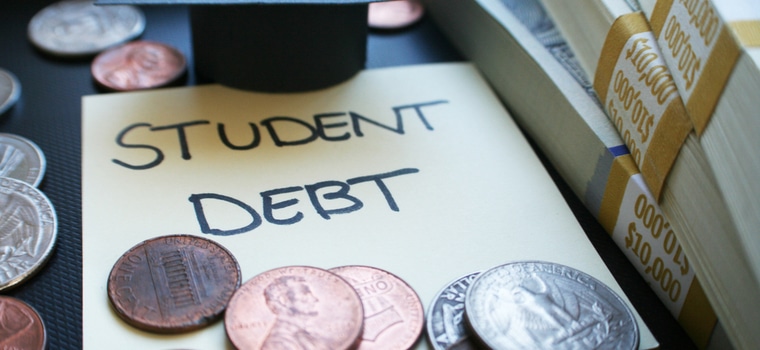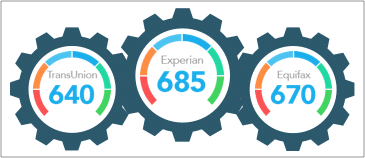If you’re struggling to pay off student loans, you’re not alone: 44.7 million Americans are carrying a total of $1.64 trillion in student debt. Many of them have loans from more than one lender. If you’re carrying student loans from multiple sources you may be wondering which loans to pay off first, especially if you have the resources to make more than the minimum payments.
There are several approaches to prioritizing debt payments. Each has advantages and disadvantages, so you’ll need to review them and decide which is most appropriate to your needs.
Should You Prioritize Student Debt?
If you’re carrying large amounts of student debt this may not seem like a sensible question: getting that debt off your back can seem like the most important financial goal you have.
Before you start using your extra money to pay off student debt, though, you should consider other important financial problems and goals:
- Credit card debt. Credit card debt typically carries much higher interest rates than student loan debt. If you’re carrying a credit card balance from month to month, consider paying that off first.
- Your emergency fund. An emergency fund is a critical backup plan that can save you from having to rely on credit card debt or payday loans. If you don’t have an adequate emergency fund, consider building one up before prioritizing student loans
- Retirement savings. Retirement may seem far away, but the earlier you start saving the more ready you’ll be when it arrives. If you haven’t started contributing to a 401(k) or individual retirement account (IRA), consider starting one before you accelerate your student loan payments.
If your finances are stable and your other debts and needs are well managed, paying off those student debts will probably become your top priority and you’ll need to decide which loans to pay off first.
Know Your Student Loans
Before you start prioritizing your loans, you’ll need complete information on every loan you have. Make a full list of your loans, with answers to these questions.
- Is the Loan Private or Federal?
- If the Loan is a Federal Loan, is it Subsidized or Unsubsidized?
- Do You Have a Cosigner on the Loan?
- What is the Interest Rate? Is it Fixed or Variable?
- What is the Total Balance on the Loan?
With this information in place, you have a basis for prioritizing your loans.
How to Prioritize Student Debt
If you have more than one student loan you will probably want to select one debt to pay off first. You’ll make only minimum payments on all the other loans and devote all other available funds to paying off that priority loan. When it’s paid, you’ll move on to the next loan on your priority list.
Here are some strategies for prioritizing your loans:
- Start with private loans. Any loans that are on your credit report but are not listed on your National Student Loan Data System account are private loans. These loans usually have higher interest rates than federal loans and have fewer relief and repayment options. You’ll want to pay these loans off first.
- Prioritize loans with consignors. If you have loans with cosigners, you may wish to focus on clearing those first and releasing your cosigners from their obligations. You can do that by paying the loans off first, by refinancing the loans in your own name or by using a cosigner release clause: some lenders will allow you to release a cosigner after a certain number of payments are made.
- Prioritize the loan with the highest interest rate. Purely from a financial perspective, the most sensible approach to prioritizing student loans is to focus first on the loan with the highest interest rate. Pay that off first and move on to the loan with the next-highest rate. The money you save on interest can help you pay off other loans faster!
- Prioritize the loan with the smallest balance. Some borrowers find that successfully paying off one loan gives them the motivation they need to focus on the next. If you fit into that category, try focusing on your smallest loan first. Get that one paid, celebrate and move on to the next smallest!
- Prioritize loans with variable interest rates. These loans may have competitive interest rates now, but that could change with time. Avoid unpleasant surprises by retiring variable-rate loans early.
- If you have federal loans, pay the unsubsidized loans first. Unsubsidized federal loans have higher interest rates than subsidized loans. Pay off the unsubsidized loans first.
- Pay subsidized federal loans last. Subsidized federal student loans have the lowest interest rates and the widest range of privileges of any student loans. These loans are costing you the least, so pay them off last.
- Consider refinancing or consolidation. If you have private loans and your credit has improved since you got them, you may benefit from refinancing. You can take out a new loan, use it to pay several old loans and lower your rate and consolidate several payments into one at the same time. Federal student loans can be consolidated with a Federal Direct Loan. You will have fewer payments to worry about, but you won’t get a lower interest rate
There are several considerations here. Paying off loans with high-interest rates makes good financial sense, but if getting a relatively small loan off your back will help keep you motivated or if your priority is getting a cosigner off your record there’s nothing wrong with putting those loans first. You will almost always want to put federal loans last. Their lower interest rates and multiple repayment options make them easier to manage than private loans.
Remember that even if a loan has a low priority, you still have to make the minimum monthly payment. Your priority list determines where you place any money you have left available for loan payments after the minimum payments on all your loans are made. You don’t want to default on student loans. The consequences can be severe.
Conclusion
Student debt can seem insurmountable, especially if you have multiple loans and a large balance. It’s not impossible to pay them off. Others have done it and you can too. Get your financial life in order, choose a loan payment strategy that works for you, and focus on paying the loans off one at a time, according to your priorities. It takes time and discipline, but the outcome is worth the effort!




